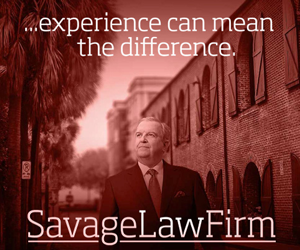By Paul Gable
Quarterly reports on contributions and expenditures by political campaigns are often seen as guidelines of the viability of a candidate.
Often, too much emphasis is placed on the contribution side of the ledger. Actually, it is the value realized from the expenditure side in raising the profile and message of a candidate that provides a more accurate picture of viability.
For that reason, the recent filing by Graham Allen, the non-resident candidate for the 7th Congressional District Republican nomination, raises some questions.
According to the Allen campaign’s most recent filing with the Federal Election Commission, a total of $646,000 (in round numbers) has been raised in contributions over the last two calendar quarters. Added to this amount is a $92,000 loan which brings total receipts for the campaign to date of $738,000, a seemingly good amount for a first-time candidate.
However, according to the filing, the Allen campaign has spent a total of $435,000 over those same two periods with no appreciable increase in Allen’s name recognition or message among 7th District voters. No tv or radio ads, no mailers, no billboards, nothing!
Having never lived in the 7th District and only a recent resident of South Carolina in the Greenville area, Allen was always going to have a difficult time getting voters to know who he is, much less what he stands for. After the reported expenditure of $435,000 this hasn’t changed.
When Allen first announced his candidacy for the 7th District Congressional seat currently held by Tom Rice, my first thought was Allen doesn’t know anybody in the 7th District and nobody knows him.
It now appears that thought was probably mistaken. It appears possible that Allen has had some type of contact with Alan Clemmons, Horry County’s own master of spending campaign funds while not advancing a campaign.
According to Clemmons’ campaign filings with the S. C. Ethics Commission, he spent approximately $480,000 from his campaign funds during the six election cycles from 2008-2018 inclusive but never had an opponent in either the primary or general elections in those years. Included in the $480,000 of expenditures were payments totaling approximately $150,000 to Heather Ammons Crawford noted as “campaign services” or “contract services” before she was elected to the House.
In addition to the money paid to Crawford, a number of globe trotting junkets were included among Clemmons’ ‘campaign’ expenditures. Of note is one trip where former Sen. Ray Cleary accompanied Clemmons and Crawford and was fined by the Senate Ethics Committee for misuse of campaign funds.
Clemmons, Crawford and Cleary all visited Israel together on a trip that each paid for, at least partially, from their campaign funds. Cleary was fined by the Senate Ethics Committee and forced to pay back the funds to his campaign account in addition to paying fines for using them in the first place while Clemmons and Crawford skated by with the House Ethics Committee. How is it determined to be an illegal use of campaign funds by the Senate Ethics Committee and legal use by the House Ethics Committee when the same ethics laws apply to members of both Houses of the legislature and the funds were spent for exactly the same purpose on the same trip?
You can find a number of S. C. House members who spent in the $25,000-$50,000 range for election campaigns when they had opposition. To spend an average of $80,000 per campaign over six election cycles when you had no opposition is a notable achievement.
Rep. Case Brittain, who opposed Clemmons in the June 2020 Republican primary, criticized Clemmons’ use of campaign funds for all manner of expenses not directly tied to election. However, five weeks after Clemmons won that primary election, Clemmons resigned his House seat, immediately endorsed Brittain and all is apparently forgotten.
Reporting on the expenditures of campaign funds is minimal at both the state and federal levels. Entries such as ‘digital marketing’ or ‘legislative update’ apparently suffice as an explanation for expenditures of five figures, according to various campaign reports I have viewed.
I submit citizens should apply a form of the term ‘caveat emptor’ to anticipated campaign donations by researching whether the candidate they plan to donate to is using the funds to actually promote his or her candidacy.







Speak Up…